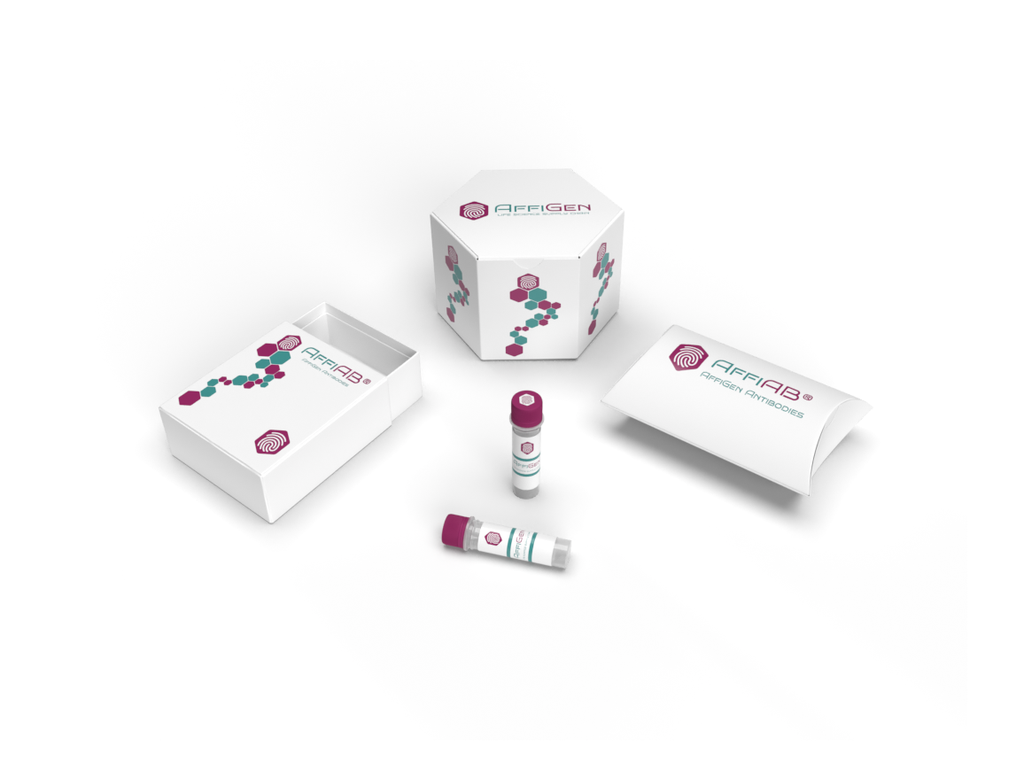AffiAB® Anti-Myoglobin Antibody
Myoglobin (symbol Mb or MB) is an iron- and oxygen-binding protein found in the cardiac and skeletal muscle tissue of vertebrates in general and in almost all mammals. Myoglobin is distantly related to hemoglobin. Compared to hemoglobin, myoglobin has a higher affinity for oxygen and does not have cooperative binding with oxygen like hemoglobin does. In humans, myoglobin is only found in the bloodstream after muscle injury. High concentrations of myoglobin in muscle cells allow organisms to hold their breath for a longer period of time. Diving mammals such as whales and seals have muscles with particularly high abundance of myoglobin. Myoglobin is found in Type I muscle, Type II A, and Type II B; although many texts consider myoglobin not to be found in smooth muscle, this has proved erroneous: there is also myoglobin in smooth muscle cells. Myoglobin was the first protein to have its three-dimensional structure revealed by X-ray crystallography. This achievement was reported in 1958 by John Kendrew and associates. For this discovery, Kendrew shared the 1962 Nobel Prize in chemistry with Max Perutz. Despite being one of the most studied proteins in biology, its physiological function is not yet conclusively established: mice genetically engineered to lack myoglobin can be viable and fertile, but show many cellular and physiological adaptations to overcome the loss. Through observing these changes in myoglobin-depleted mice, it is hypothesised that myoglobin function relates to increased oxygen transport to muscle, and to oxygen storage; as well, it serves as a scavenger of reactive oxygen species. In humans, myoglobin is encoded by the MB gene. Myoglobin can take the forms oxymyoglobin (MbO2) , carboxymyoglobin (MbCO) , and metmyoglobin (met-Mb) , analogously to hemoglobin taking the forms oxyhemoglobin (HbO2) , carboxyhemoglobin (HbCO) , and methemoglobin (met-Hb) .
Antibody type
Rabbit polyclonal Antibody
Uniprot ID
SwissProt: P02144 Human; SwissProt: P04247 Mouse; SwissProt: Q9QZ76 Rat
Recombinant
NO
Conjugation
Non-conjugated
Host
Rabbit
Isotype
IgG
Clone
N/A
KO/KD
N/A
Species reactivity
Human, Mouse, Rat
Tested applications
WB, IHC-P, FC
Predicted species reactivity
N/A
Immunogen
Recombinant protein within Human Myoglobin aa 1-140 / 154.
Storage
Store at +4°C after thawing. Aliquot store at -20°C. Avoid repeated freeze / thaw cycles.
Form
Liquid
Storage buffer
1*PBS (pH7.4) , 0.2% BSA, 50% Glycerol. Preservative: 0.05% Sodium Azide.
Concentration
1 mg/mL.
Purity
Immunogen affinity purified.
Signal pathway
Cardiovascular
Recommended dilutions
WB:1:500-1:1, 000
; IHC-P:1:200
; FC:1:50-1:100
Molecular Weight
Predicted band size: 17 kDa
Subcellular location
Cytosol. Secreted.
Positive control
MCF-7, human skeletal muscle tissue, rat heart muscle tissue, mouse skeletal muscle tissue, mouse heart muscle tissue, SiHa.
